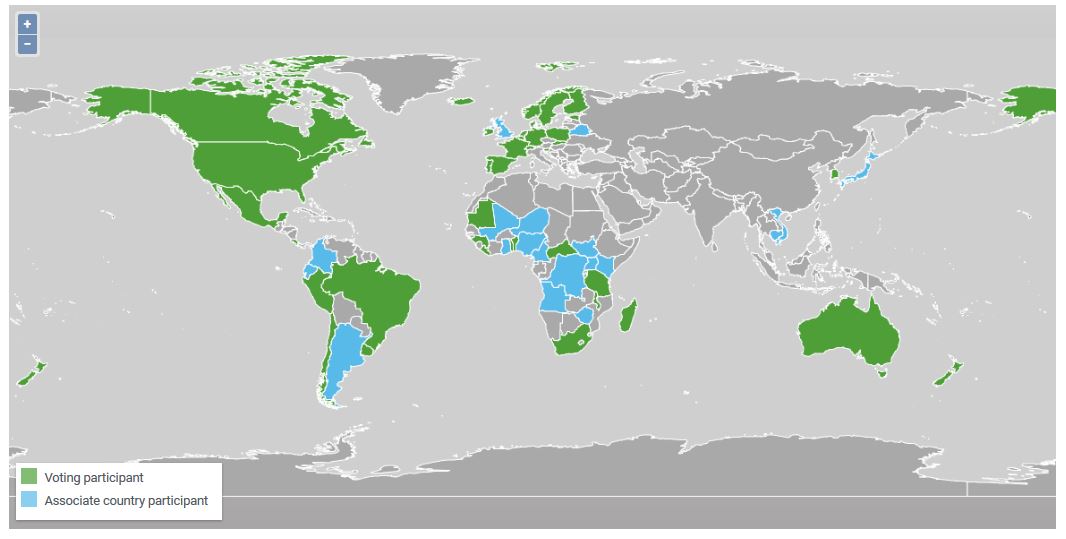|
Coreobagrus Brevicorpus
''Coreobagrus brevicorpus'' (common name - Korean stumpy bullhead) is a species of bagrid catfish endemic to Korea, where it is found in the Nakdong River catchment. It occurs in freshwater and can grow to a length of 9.2 cm. The species was first described in 1936 by Tamezo Mori,Mori, T. (1936). Descriptions of one new genus and three new species of Siluroidea from Chosen. ''Dobutsugaku Zasshi = Zoological Magazine Tokyo.'' 48 (8-10): 671-675, Pl. 24 and has a single dorsal spine, six dorsal soft rays, one anal spine, and 12-14 anal soft rays, no scales on its body and relatively large eyes. It is found in clear waters areas with large stones and pebbles on the bottom, where it mainly feeds on the larvae of aquatic insects. It is nocturnal and its spawning season is believed to be from June to July. It is listed as "vulnerable" on the IUCN threatened species list. and as a natural monument of South Korea (designated March 17, 2005) References External links ''C ... [...More Info...] [...Related Items...] OR: [Wikipedia] [Google] [Baidu] |
Tamezo Mori
, (1884–1962) was a Japanese naturalist in Chōsen (1910–1945). He taught at a preparatory school for Keijō Imperial University in Seoul Seoul, officially Seoul Special Metropolitan City, is the capital city, capital and largest city of South Korea. The broader Seoul Metropolitan Area, encompassing Seoul, Gyeonggi Province and Incheon, emerged as the world's List of cities b ... from 1909 until he was expelled by the American forces in 1945. Primarily an ichthyologist, he published numerous works on the zoology of the Korean Peninsula and Manchuria. Some of these, such as his ''Checklist of the Fishes of Korea'' and the 1934 ''Coloured Butterflies from Korea'', are still in print. References *Austin, Oliver. 1948. The Birds of Korea. ''Bulletin of the Museum of Comparative Zoology at Harvard College'' 101 no. *Vladykov, V. & Greeley, J. 1963. ''Order Acipenseroidei'' in Soft-rayed Bony fishes : class Osteichthyes, order Acipenseroidei, order Lepisostei, order Is ... [...More Info...] [...Related Items...] OR: [Wikipedia] [Google] [Baidu] |
IUCN Red List
The International Union for Conservation of Nature (IUCN) Red List of Threatened Species, also known as the IUCN Red List or Red Data Book, founded in 1964, is an inventory of the global conservation status and extinction risk of biological species. A series of Regional Red Lists, which assess the risk of extinction to species within a political management unit, are also produced by countries and organizations. The goals of the Red List are to provide scientifically based information on the status of species and subspecies at a global level, to draw attention to the magnitude and importance of threatened biodiversity, to influence national and international policy and decision-making, and to provide information to guide actions to conserve biological diversity. Major species assessors include BirdLife International, the Institute of Zoology (the research division of the Zoological Society of London), the World Conservation Monitoring Centre, and many Specialist Groups w ... [...More Info...] [...Related Items...] OR: [Wikipedia] [Google] [Baidu] |
Natural Monuments Of South Korea
Nature is an inherent character or constitution, particularly of the ecosphere or the universe as a whole. In this general sense nature refers to the laws, elements and phenomena of the physical world, including life. Although humans are part of nature, human activity or humans as a whole are often described as at times at odds, or outright separate and even superior to nature. During the advent of modern scientific method in the last several centuries, nature became the passive reality, organized and moved by divine laws. With the Industrial Revolution, nature increasingly became seen as the part of reality deprived from intentional intervention: it was hence considered as sacred by some traditions (Rousseau, American transcendentalism) or a mere decorum for divine providence or human history (Hegel, Marx). However, a vitalist vision of nature, closer to the pre-Socratic one, got reborn at the same time, especially after Charles Darwin. Within the various uses of the word t ... [...More Info...] [...Related Items...] OR: [Wikipedia] [Google] [Baidu] |
Fish Described In 1936
A fish (: fish or fishes) is an aquatic, anamniotic, gill-bearing vertebrate animal with swimming fins and a hard skull, but lacking limbs with digits. Fish can be grouped into the more basal jawless fish and the more common jawed fish, the latter including all living cartilaginous and bony fish, as well as the extinct placoderms and acanthodians. In a break to the long tradition of grouping all fish into a single class (Pisces), modern phylogenetics views fish as a paraphyletic group. Most fish are cold-blooded, their body temperature varying with the surrounding water, though some large active swimmers like white shark and tuna can hold a higher core temperature. Many fish can communicate acoustically with each other, such as during courtship displays. The study of fish is known as ichthyology. The earliest fish appeared during the Cambrian as small filter feeders; they continued to evolve through the Paleozoic, diversifying into many forms. The earliest fish wi ... [...More Info...] [...Related Items...] OR: [Wikipedia] [Google] [Baidu] |
Bagridae
The Bagridae are a family of catfish that are native to Africa ('' Bagrus'') and Asia (all other genera) from Japan to Borneo. It includes about 245 species. These fish are commonly known as naked catfishes or bagrid catfishes. Many large bagrids are important as a source of food. Some species are also kept as aquarium fishes. Physical characteristics The dorsal fin is preceded by a spine. The adipose fin is present and can have a relatively long base in some species. The pectoral fin spine can be serrated. The body is completely naked (they have no scales). The maximum length is about . Fishes of the family Bagridae have four pairs of well-developed barbels covered by a layer of taste bud-enriched epithelium Epithelium or epithelial tissue is a thin, continuous, protective layer of cells with little extracellular matrix. An example is the epidermis, the outermost layer of the skin. Epithelial ( mesothelial) tissues line the outer surfaces of man .... Taxonomy The taxon ... [...More Info...] [...Related Items...] OR: [Wikipedia] [Google] [Baidu] |
Global Biodiversity Information Facility
The Global Biodiversity Information Facility (GBIF) is an international organisation that focuses on making scientific data on biodiversity available via the Internet using web services. The data are provided by many institutions from around the world; GBIF's information architecture makes these data accessible and searchable through a single portal. Data available through the GBIF portal are primarily distribution data on plants, animals, fungi, and microbes for the world, and scientific names data. The mission of the GBIF is to facilitate free and open access to biodiversity data worldwide to underpin sustainable development. Priorities, with an emphasis on promoting participation and working through partners, include mobilising biodiversity data, developing protocols and standards to ensure scientific integrity and interoperability, building an informatics architecture to allow the interlinking of diverse data types from disparate sources, promoting capacity building and cat ... [...More Info...] [...Related Items...] OR: [Wikipedia] [Google] [Baidu] |
Natural Monuments (South Korea)
Natural Monuments () is a national-level designation within the heritage preservation system of South Korea for animals, plants, landforms, geological formations, and nature reserves. It is administered by the Cultural Heritage Administration according to the Natural Heritage Protection Law (). , a total of 702 items have received this designation. Of them, 132 are scenic sites and 570 are natural monuments. Only 472 of these continue to maintain their natural monument designation, and only 129 maintained their scenic site designation.From pdf file 천연기념물과 통계 ��연기념물,명승2200831기준).pdf, available from link History During the period of Japanese occupation, the Japanese authorities legislated the "Rules to conserve artefacts and historic sites ()" in July 1916, and a law called The Act of Conserving the Historic Sites, Natural Monuments, Scenic Sites and Treasures of Korea () was published in August 1933. After the liberation of Korea, the South K ... [...More Info...] [...Related Items...] OR: [Wikipedia] [Google] [Baidu] |
Korea Heritage SErvice
The Korea Heritage Service (), formerly the Cultural Heritage Administration and Cultural Properties Administration, is the agency of the South Korean government charged with preserving and promoting Korean cultural heritage. It is headquartered in the city of Daejeon at the Daejeon Government Complex. Previously part of the Ministry of Culture and Tourism, it was elevated to a sub-ministerial agency in 1999. History The Cultural Properties Administration was formally established in October 1961, but descends from the Former Royal Properties Administration to the Office created in November 1945 at the beginning of American military rule to replace the Office of the Yi Dynasty. The 1962 Cultural Property Protection Law was modelled on the Japanese 1950 Law for the Protection of Cultural Properties. On May 17, 2024, the Cultural Heritage Administration changed its name to "Korea Heritage Service". The name change also accompanied a reported structural overhaul. Administrati ... [...More Info...] [...Related Items...] OR: [Wikipedia] [Google] [Baidu] |
Species
A species () is often defined as the largest group of organisms in which any two individuals of the appropriate sexes or mating types can produce fertile offspring, typically by sexual reproduction. It is the basic unit of Taxonomy (biology), classification and a taxonomic rank of an organism, as well as a unit of biodiversity. Other ways of defining species include their karyotype, DNA sequence, morphology (biology), morphology, behaviour, or ecological niche. In addition, palaeontologists use the concept of the chronospecies since fossil reproduction cannot be examined. The most recent rigorous estimate for the total number of species of eukaryotes is between 8 and 8.7 million. About 14% of these had been described by 2011. All species (except viruses) are given a binomial nomenclature, two-part name, a "binomen". The first part of a binomen is the name of a genus to which the species belongs. The second part is called the specific name (zoology), specific name or the specific ... [...More Info...] [...Related Items...] OR: [Wikipedia] [Google] [Baidu] |
Nakdong River
The Nakdong River or Nakdonggang (, ) is the longest river in South Korea, which passes through the major cities of Daegu and Busan. It takes its name from its role as the eastern border of the Gaya confederacy during Three Kingdoms of Korea, Korea's Three Kingdoms Era. Geography The Nakdong River flows from the Taebaek Mountains to the South Sea or Korea Strait, which separates Korea from Japan. The river originates from the junction of the Cheoramcheon and Hwangjicheon streams in Dongjeom-dong, Taebaek, Gangwon Province, South Korea, Gangwon Province at Gumunso. From there to its River mouth, mouth it winds for about . The width of the river ranges from only a few metres in its upper reaches to several hundred metres towards its estuary. Major tributaries include the Yeong River, Yeong, Geumho River, Geumho, and Nam River (South Korea), Nam rivers. Together with its Tributary, tributaries, the Nakdonggang drains most of North Gyeongsang Province, North Gyeongsang and South Gyeo ... [...More Info...] [...Related Items...] OR: [Wikipedia] [Google] [Baidu] |
Academy Of Korean Studies
The Academy of Korean Studies (AKS; ) is a South Korean research and educational institute focusing on Korean studies. It was established on June 22, 1978, by the Ministry of Education & Science Technology. Works Journals *'' Korea Journal'' *''Review of Korean Studies'' *''Korean Studies Quarterly'' The following journals are not published by the AKS, but are often incorrectly assumed to be: *'' Korean Studies'', Hawaii *'' The Journal of Korean Studies'', Seattle *'' Encyclopedia of Korean Culture'' *'' Acta Koreana'' See also * List of national universities in South Korea * List of universities and colleges in South Korea * Education in Korea References External links * * Introducing research institutesat the Korean History On-line (한국역사정보통합시스템) (archived) Bundang 1978 establishments in South Korea Universities and colleges in Gyeonggi Province Research institutes in South Korea Social science research institutes Educational instit ... [...More Info...] [...Related Items...] OR: [Wikipedia] [Google] [Baidu] |



